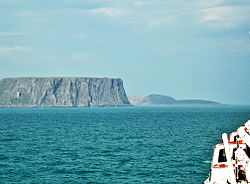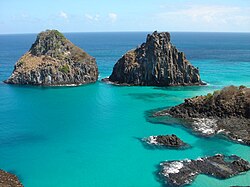


In geography, a cape is a headland, peninsula or promontory extending into a body of water, usually a sea. [1] A cape usually represents a marked change in trend of the coastline, [2] often making them important landmarks in sea navigation. This also makes them prone to natural forms of erosion, mainly tidal actions, resulting in a relatively short geological lifespan.










